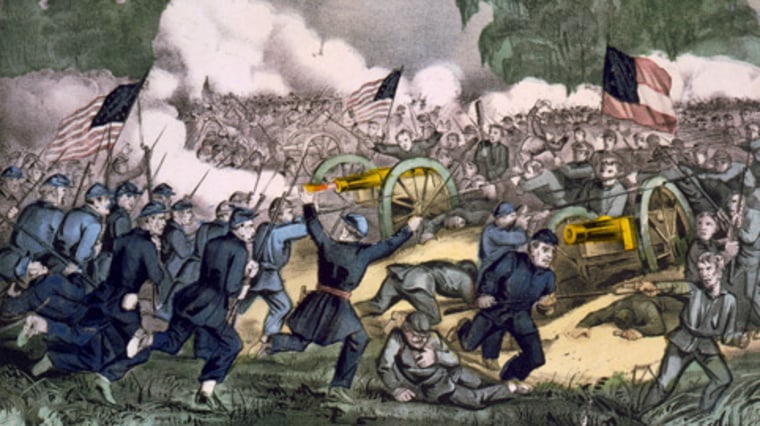The Civil War conflict began April 12, 1861 when southern forces attacked a federal armory at Fort Sumter in South Carolina. Eleven southern states seceded and formed the Confederate States of America, led by Jefferson Davis. Northern states formed the Union, which was led by President Abraham Lincoln and the Republican Party, and opposed the expansion of slavery. In the first year of the war, the Union took control of the border states and established a naval blockade as both sides raised large armies. In September 1862, Lincoln issued a preliminary Emancipation Proclamation, which proposed freeing the slaves in rebellious states. This made the abolition of slavery a primary goal of the war—one bitterly opposed by the Copperheads, northern Republicans who opposed the war. Emancipation ensured that Britain and France, which had by then abolished slavery, would not intervene to help the Confederates and also allowed the Union to recruit blacks for reinforcements—a resource the Confederacy did not exploit until it was too late.
By 1864, the Union’s advantages in manpower, industry, finance, political organization and transportation were overwhelming the Confederacy. Union General Ulysses S. Grant fought a bloody series of battles with Confederate General Robert E. Lee in Virginia in the summer of 1864. Lee could not replace his casualties and was forced to retreat to Richmond, Virginia. By that time, Union General William Sherman had captured Atlanta and marched through the Carolinas to the sea. In 1865, the Confederacy collapsed when Lee surrendered. The 13th Amendment to the Constitution was passed abolishing slavery.
The restoration of the country was part of a highly contentious postwar effort known as Reconstruction. Although Congress established the Freedmen’s Bureau to assist former slaves in the transition to freedom, several southern states enacted black codes to curb their rights. The federal government eventually overturned these codes, but several decades later many of these same states passed Jim Crow laws, which would set the tone for black-white relations for decades to come. These laws restricted the economic and civil rights of blacks. All public places were segregated and tactics of intimidation eroded personal freedom for African Americans; among the tactics used, lynching was the most important technique. Between 1890 and 1910, the peak period of white backlash, all southern and border states disenfranchised the vast majority of blacks, who just a few years before had for the first time elected black officials to Congress and local and state office.
In 1861, South Carolina, Mississippi, Florida, Alabama, Georgia, Louisiana, Texas, Virginia, Arkansas, Tennessee and North Carolina seceded from the Union. Confederate forces fired on Fort Sumter in South Carolina, starting the Civil War. Congress abolished slavery in Washington, D.C. and the territories in 1862.
In 1863, President Lincoln issued the Emancipation Proclamation, which immediately affected slaves living in Union states. That same year, Maryland abolished slavery.
In 1864, Lincoln repealed the Fugitive Slave Law of 1850. Louisiana, Arkansas, and Missouri abolished slavery. The Confederates surrendered on April 12, 1865, at Appomattox Courthouse, Virginia, ending the Civil War.
Three days later, on April 15, 1865, Lincoln is shot at Ford’s Theater and died; by December, the 13th Amendment abolishing slavery was ratified by the states.
Congress passed the Civil Rights Bill of 1866, which invalidated the black codes.
In 1867, Congress passed the Reconstruction Acts, which established the right of black males to vote and hold office and set the terms for re-admission of former Confederate states except Tennessee, a compromise that President Andrew Johnson from Tennessee, who succeeded Lincoln, negotiated. The 14th Amendment, guaranteeing equal protection and defining citizenship for the first time, was ratified in 1868.
In 1869, Tennessee became the first in a succession of Southern states to establish an all-white "redeemer" government sympathetic to the cause of the Confederacy.
